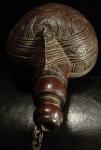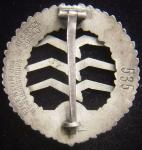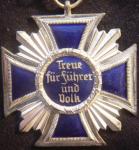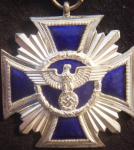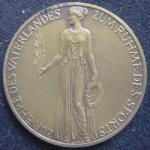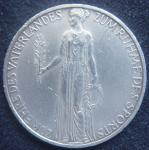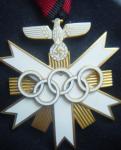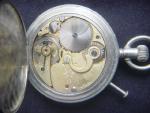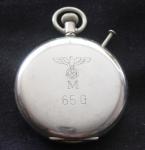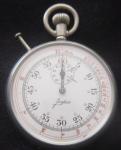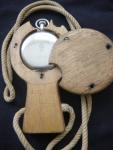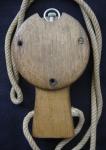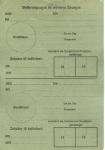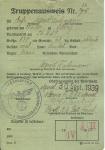
John Burchell
Valued Member-
Posts
285 -
Joined
-
Last visited
Content Type
Profiles
Forums
Blogs
Gallery
Events
Store
Everything posted by John Burchell
-
Many thanks for your feedback, Mervyn. It was most interesting for me to research a bit about pilgrim's flasks as you suggested. I learned that many of these were flat-backed, rather small and made of terra cotta, metal or glass protected in a leather case. These were used by pilgrims in antiquity and in the early Middle Ages to carry home oil from the lamps burning in the sanctuaries visitied; water from a famous well in Mecca or even earth scooped-up piously from around a worshipped tomb. These were also described as "ampulla" shaped like a flattened gourd with two small handles on the side and a small spout. The size and quality seemes to have varied somewhat. As you have noted, pilgrims also carried flasks for wine or water. However, I feel that the flask which I have described above, made of wood, is rather too large to have been used for bringing holy water or oil back from a pilgrimage; and also rather small for carrying water or wine for consumption during a voyage. A collector friend of mine with experience in antique weapons and accoutrements (not a member of this Forum) has suggested to me that this is a powder flask, the origin of which may be North African from Morocco; or Asian, perhaps from Afghanistan. He estimates the worth to be between $75 - 125. I remain undecided and look forward to additional feedback and input which may help to more precisely categorize this item. John
-
Perhaps a bit of a long shot here but - nothing ventured, nothing gained. I am hoping that one of the members here can help in solving this mystery for me. The attached pictures are of what I believe to be a gun powder flask. It looks to have been made from one piece of wood, with a separately affixed, unremovable neck portion. There is a carved pattern on the front, side and at the top of the reverse. The reverse side has what appears to be a round wooden plug firmly set into the centre. It appears from the round outer marking that there may have been something attached over that as there are the tops of small metal pins or nails remaining. The attachment chain is fastened to a ring which is attached to the loop end of a pin that obviously extends through the flask and is held in place by the burred end of the pin and a washer device that can be seen in approximately the same position on the obverse. The item measures approximately 8-1/2 inches in length x 4 inches wide x 3 inches deep. The stopper or plug for the hole opening at the top is missing. I hope that someone can help me to identify this item and pinpoint the origin and period...and perhaps even the value. Best regards, John
-
-
It has been a while since I posted any items in this specific forum. Although I do not collect fraternal awards, here are a couple of recent pick-ups for viewing and comment, as appropriate. Here is what is written on the pieces: 1. "Richmond Star / L.O.L. / No. 1521". Given the five-pointed star with crossed gavels and the initials, I understand this to be an award of the Loyal Orange Lodge, Orange Order. There are no other markings. 2. "1936-1986 / 50 Years / The The Grand Lodge of Ancient Free & Accepted Masons of Nova Scotia". From the engraving on the obverse, obviously a long-service award to: "Bro James B. Ferguson / New Caledonia Lodge No 11". Enjoy the viewing. Any approximate indication of the value of these two pieces would be appreciated. Thanks and regards, John
-
Thought I would add this one to the thread. It has been "sleeping" in my collection for the last 35 years since I acquired it in Germany. I do not easily refer to medals as being "minty", but will make an exception here. This award has never been worn. The burnished silver areas on the rays and arms of the cross are still shiny and the translucent blue enamelling is flawless. It still retains a lead proof-seal (marked "M") closing the wire inserted through the suspension ring, presumably placed there by the maker to attest to quality - something which I have never seen before on a German Third Reich medal. There is no marking on the suspension ring, but the compartmentalized case is marked on the reverse with the stamp "RZM M 1/120", being the RZM code for Wilhelm Deumer. I would appreciate feedback and comments, especially as relates to the lead seal. Thanks and regards, John
-
1936 Olympic games decorations
John Burchell replied to Raz's topic in State, Civil Awards & Decorations
-
1936 Olympic games decorations
John Burchell replied to Raz's topic in State, Civil Awards & Decorations
-
1936 Olympic games decorations
John Burchell replied to Raz's topic in State, Civil Awards & Decorations
In reviewing this thread, I noticed the scans of a 2nd Class award with ribbon in the Austrian fold-style added by Prosper Keating in posting #36. It was I who had sent him those pictures. This was also easily distinguishable by the two very fine crack lines in the enamel of the award at the 4 o'clock position. I was pleased to see the pictures posted here. A belated "thank you", Prosper. Here is another close-up view of that award with the eagle's head exposed...which so often is buried within the ribbon. As well, I am adding pictures of a couple of boxed Olympic souvenir medallions in bronze and silver which I believe were private purchase items...although I stand to be corrected on that, perhaps, by others who know more about them. Regards, John -
This beauty I believe was used for the timing of torpedoes from launch to impact (or not), but it could perhaps be one used for navigation....or maybe both. It is still functional. The reverse of this chronometer/stopwatch is KM-marked and is also stamped "65 G" (presumably some kind of serial number). The interior works are stamped "Junghans" within an eight-pointed star; the numerals "68" underneath and a production serial number "48683". The white face is marked with the maker's name and two sets of numerals around the perimeter: red numerals in descending order ("EU=2hm" - whatever that means); and black numerals in ascending order measuring seconds. There is also a small timer in the upper portion of the face which measures the minutes elapsed. Interesting to note is that two marks have been hand-inked onto the face of this smaller minute timer at the 5 and 10 minute points. There are small, round, slightly-raised yellowish dots located under each of the large black numerals which I assume to have been "glow-in-the-dark" material (which no longer glows). Interesting, as well, is the unique, functional, protective wooden case (also stamped with the serial number "65 G") which houses this chronometer/stopwatch...probably the reason why it is still fully-functional. The heavy-duty cord fitted into the wooden case would be used to wear the stopwatch around the neck in the close quarters of the U-Boat and prevent damage from banging against the metal of the periscope or other objects. I am hoping to get some feedback on this KM-U-Boot item, especially the purpose of the red numerals, please. Thanks, and enjoy viewing this item. John
-
It is my understanding that these military identification cards were the much simpler fore-runner of the Soldbuch introduced sometime in late 1939. However, the examples shown are all slightly different from this one, namely, this one does not have a photo attached to it. This ID is of green card stock-type paper and measures approx. 8.5cm x 12.5cm. It was issued to Gefreiter Alfred Fuhrmann who entered the service on 26.9.39. This ID card was issued in the Memel on 30.Sept.1939 with a validity period until early 1940 (if I read this correctly). The reverse side with spaces for extensions of this ID remain blank, presumably because the Soldbuch came into regular use. It bears the inkstamp of the "Kriegsmarine / Kommando 7 . Marineartillerie- Abteilung". I find it interesting to note that the bearer of this ID card was on duty attached to a coastal artillery unit in the Memelland in the northern part of East Prussia which Germany annexed on 23.March 1939. I would appreciate it if anyone can add to this thread. Thanks, John



